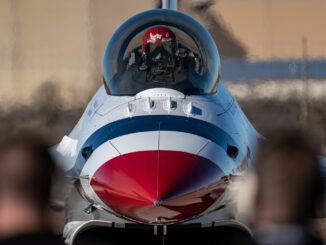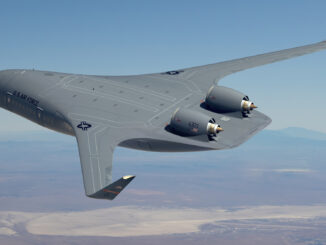 On Saturday 12th November 2022, the Boeing X-37B Orbital Test Vehicle, operated by the US Space Force, returned to Earth. The spacecraft landed at NASA Kennedy Space Center in Florida, at 5:22 am ET (10:22 am UTC). During its already sixth space mission, the vehicle spent 908 days in the Earth’s orbit, thus breaking its previous record of orbiting our planet for 780 days.
On Saturday 12th November 2022, the Boeing X-37B Orbital Test Vehicle, operated by the US Space Force, returned to Earth. The spacecraft landed at NASA Kennedy Space Center in Florida, at 5:22 am ET (10:22 am UTC). During its already sixth space mission, the vehicle spent 908 days in the Earth’s orbit, thus breaking its previous record of orbiting our planet for 780 days.
The X-37B began its sixth mission in May 2020, launched into space by United Launch Alliance Atlas V rocket from Cape Canaveral Space Force Station. On board of that unmanned space shuttle, there were many experiments and research equipment, including a solar energy experiment designed by the Naval Research Lab and FalconSat-8 satellite – successfully deployed in the Earth’s orbit in October 2021 – designed and built by cadets at the U.S. Air Force Academy in partnership with the Air Force Research Laboratory.
In addition, several NASA experiments were flown into space as part of the recently finished X-37B mission. They included, among others, METIS-2 (Materials Exposure and Technology Innovation in Space). That kind of experiment was deployed into space for the second time and its purpose was to research the effects of exposing different materials to space in order to improve the precision of space environment models. Another NASA experiment carried into space by the X-37B as part of its sixth mission was related to researching the effects of long-duration space exposure on seeds. Results of those experiments will provide valuable data for research focused on future interplanetary missions and permanent bases in space.
For that flight, the X-37B was for the first time equipped with a service module that allowed to increase the amount of payload and experiments carried by the OTV. ´Since the X-37B’s first launch in 2010, it has shattered records and provided our nation with an unrivalled capability to rapidly test and integrate new space technologies´, said Jim Chilton, senior vice president, Boeing Space and Launch. ´With the service module added, this was the most we’ve ever carried to orbit on the X-37B and we’re proud to have been able to prove out this new and flexible capability for the government and its industry partners.´

The 908 days that the Boeing X-37B spent in space during its recently concluded flight are not the only impressive statistics behind this unmanned space shuttle. With the completion of its sixth mission, the OTV has flown a total of 1.3 billion miles (more than 2.09 billion kilometres) and spent already 3,744 days in space.
The Boeing X-37B is the result of a joint programme of the U.S. Department of the Airforce Rapid Capabilities Office and the U.S. Space Force. The primary task of this unmanned Orbital Test Vehicle is taking research instruments into space and performing various experiments in the Earth’s orbit for the U.S. government and its industrial partners.
´This mission highlights the Space Force’s focus on collaboration in space exploration and expanding low-cost access to space for our partners, within and outside of the Department of the Air Force (DAF)´, said Gen. Chance Saltzman, Chief of Space Operations of the U.S. Space Force, regarding the recently completed, sixth mission of the Boeing X-37B Orbital Test Vehicle.
In conclusion, it is worth mentioning that in 2020 the X-37B was awarded the Robert J. Collier Trophy for advancing the performance, efficiency and safety of air and space vehicles.
All photos © Boeing, photo credit: Boeing / US Space Forces. Information from The Boeing Company press releases were used.



